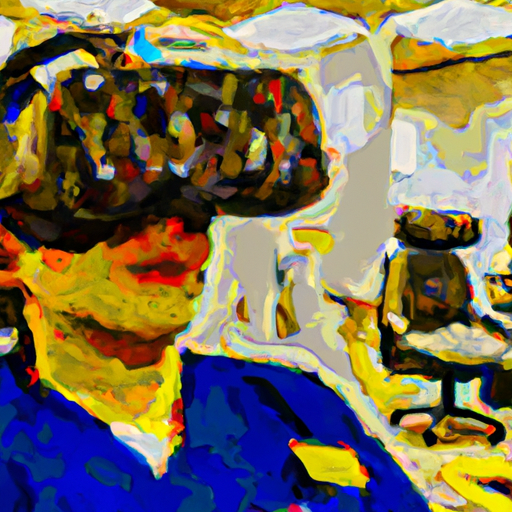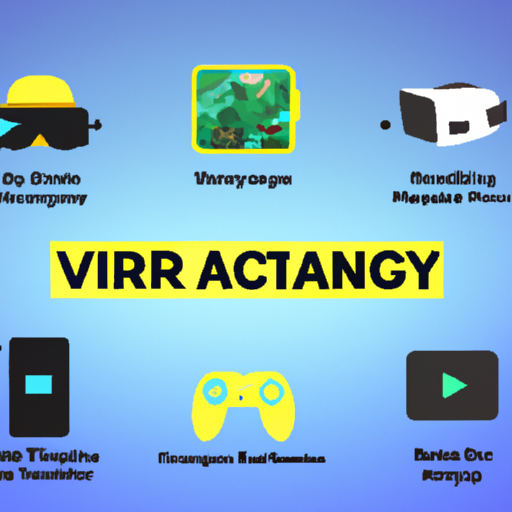-
Table of Contents
“Revolutionizing healthcare: Unlocking the power of VR/AR for telemedicine and patient treatment.”
Introduction
Virtual Reality (VR) and Augmented Reality (AR) are rapidly transforming the healthcare industry. By leveraging the power of immersive technology, healthcare providers are able to provide better patient care, improve patient outcomes, and reduce costs. VR and AR are being used in a variety of ways, from telemedicine to patient treatment. Telemedicine allows doctors to diagnose and treat patients remotely, while AR can be used to provide real-time guidance to medical professionals during complex procedures. VR and AR are also being used to help patients with physical and mental health issues, such as pain management, anxiety, and depression. By providing a more immersive and engaging experience, VR and AR are helping to revolutionize the healthcare industry.
Exploring the Potential of VR/AR in Rehabilitation and Physical Therapy
The potential of virtual reality (VR) and augmented reality (AR) in rehabilitation and physical therapy is an exciting and rapidly growing field. As technology advances, so too does the potential for these technologies to be used in the rehabilitation and physical therapy space.
VR and AR have the potential to revolutionize the way physical therapists and rehabilitation professionals work with their patients. By providing a virtual environment, physical therapists can create a safe and controlled environment for their patients to practice and improve their physical abilities. This can be especially beneficial for patients who are unable to practice in a real-world environment due to physical limitations or other factors.
VR and AR can also be used to provide patients with a more immersive experience. By providing a virtual environment, physical therapists can create a more engaging and interactive experience for their patients. This can help to motivate patients to work harder and improve their physical abilities.
In addition, VR and AR can be used to provide patients with a more personalized experience. By using sensors and tracking technology, physical therapists can monitor a patient’s progress and tailor their treatment plans accordingly. This can help to ensure that patients are receiving the most effective treatment possible.
Finally, VR and AR can be used to provide physical therapists with a better understanding of their patients’ needs. By using sensors and tracking technology, physical therapists can gain a better understanding of how their patients are responding to treatment and make adjustments accordingly. This can help to ensure that patients are receiving the most effective treatment possible.
Overall, the potential of VR and AR in rehabilitation and physical therapy is immense. By providing a virtual environment, physical therapists can create a safe and controlled environment for their patients to practice and improve their physical abilities. In addition, VR and AR can be used to provide patients with a more immersive experience and a more personalized experience. Finally, VR and AR can be used to provide physical therapists with a better understanding of their patients’ needs. As technology continues to advance, the potential of VR and AR in rehabilitation and physical therapy will only continue to grow.
The Future of VR/AR in Surgical Training and Education
The use of virtual reality (VR) and augmented reality (AR) in surgical training and education is rapidly becoming a reality. With the advent of new technologies, surgeons are now able to practice and hone their skills in a safe, simulated environment. This technology has the potential to revolutionize the way surgeons learn and practice their craft.
VR and AR can be used to create realistic simulations of surgical procedures. This allows surgeons to practice and refine their skills without the risk of harming a patient. The simulations can be tailored to the individual surgeon’s needs, allowing them to practice specific techniques or procedures. This can help surgeons become more proficient and confident in their abilities.
VR and AR can also be used to create interactive educational materials. This can include 3D models of anatomy, interactive videos, and other visual aids. This can help surgeons better understand the anatomy and physiology of a procedure, as well as the risks and benefits associated with it.
In addition, VR and AR can be used to create immersive learning experiences. This can include simulations of operating rooms, patient interactions, and other scenarios. This can help surgeons become more comfortable with the environment and better understand the nuances of a procedure.
The use of VR and AR in surgical training and education is still in its infancy. However, the potential for this technology is immense. It has the potential to revolutionize the way surgeons learn and practice their craft. As the technology continues to evolve, it is likely that VR and AR will become an integral part of surgical training and education.
Examining the Impact of VR/AR on Mental Health Care
The use of virtual reality (VR) and augmented reality (AR) in mental health care is a rapidly growing field of research. As technology advances, so too does the potential for these technologies to be used to improve mental health outcomes. In this blog post, we will explore the potential impact of VR/AR on mental health care and the implications for the future of mental health treatment.
VR and AR are immersive technologies that allow users to interact with virtual environments and objects. In the context of mental health care, these technologies can be used to create virtual simulations of real-world scenarios, allowing users to practice coping skills and gain exposure to situations that may otherwise be difficult to access. For example, VR can be used to simulate a stressful situation, such as a job interview, allowing users to practice their responses in a safe environment.
In addition to providing a safe space for users to practice coping skills, VR/AR can also be used to provide therapeutic interventions. For example, VR can be used to provide exposure therapy, which is a type of cognitive-behavioral therapy that involves gradually exposing a person to a feared situation or object. This type of therapy has been found to be effective in treating anxiety disorders, such as post-traumatic stress disorder (PTSD).
The potential of VR/AR to improve mental health outcomes is further supported by research that suggests that these technologies can reduce symptoms of depression and anxiety. For example, one study found that participants who used VR to practice mindfulness techniques reported a decrease in symptoms of depression and anxiety.
The use of VR/AR in mental health care is still in its early stages, but the potential for these technologies to improve mental health outcomes is promising. As technology advances, so too does the potential for VR/AR to be used to provide more effective and accessible mental health care. It is important to note, however, that more research is needed to fully understand the potential of these technologies and their implications for mental health care.
How VR/AR is Revolutionizing Patient Treatment
Virtual reality (VR) and augmented reality (AR) are revolutionizing the way healthcare professionals treat patients. By providing immersive, interactive experiences, these technologies are helping to improve patient outcomes and reduce costs.
VR and AR are being used in a variety of ways to improve patient care. For example, VR can be used to help patients with anxiety and phobias by providing a safe, controlled environment in which they can confront their fears. AR can be used to provide real-time information to healthcare professionals, such as patient vital signs or medical images.
VR and AR can also be used to help patients with physical rehabilitation. By providing an immersive, interactive environment, patients can practice physical therapy exercises in a safe, controlled environment. This can help to reduce the risk of injury and improve patient outcomes.
VR and AR can also be used to provide educational experiences for patients. For example, VR can be used to provide virtual tours of medical facilities, allowing patients to become familiar with their surroundings before they arrive. AR can be used to provide interactive, step-by-step instructions for medical procedures, helping to reduce the risk of errors.
Finally, VR and AR can be used to provide remote consultations with healthcare professionals. This can help to reduce the need for in-person visits, saving time and money for both patients and healthcare providers.
VR and AR are revolutionizing the way healthcare professionals treat patients. By providing immersive, interactive experiences, these technologies are helping to improve patient outcomes and reduce costs. As these technologies continue to evolve, they will continue to revolutionize the way healthcare is delivered.
Exploring the Benefits of VR/AR in Telemedicine
The world of telemedicine is rapidly evolving, and virtual reality (VR) and augmented reality (AR) are playing an increasingly important role in the field. VR and AR are being used to provide remote medical care, allowing doctors to diagnose and treat patients from anywhere in the world. In this article, we’ll explore the benefits of VR and AR in telemedicine and how they are revolutionizing the way healthcare is delivered.
One of the most significant advantages of VR and AR in telemedicine is the ability to provide remote medical care. With VR and AR, doctors can diagnose and treat patients from anywhere in the world. This means that patients can receive medical care without having to travel to a doctor’s office or hospital. This can be especially beneficial for those living in rural areas or those who are unable to travel due to physical or financial constraints.
VR and AR also allow doctors to provide more accurate diagnoses and treatments. With VR and AR, doctors can view a patient’s medical history, vital signs, and other data in real-time. This allows them to make more informed decisions about a patient’s care. Additionally, VR and AR can be used to simulate medical procedures, allowing doctors to practice and perfect their techniques before performing them on a real patient.
Finally, VR and AR can be used to provide a more immersive experience for patients. For example, VR can be used to create a virtual environment where patients can interact with their doctor and receive treatment. This can help to reduce anxiety and make the experience more comfortable for the patient.
In conclusion, VR and AR are revolutionizing the way healthcare is delivered. By providing remote medical care, more accurate diagnoses and treatments, and a more immersive experience for patients, VR and AR are making telemedicine more accessible and effective than ever before.
Conclusion
Virtual reality (VR) and augmented reality (AR) have the potential to revolutionize healthcare, from telemedicine to patient treatment. VR and AR can provide a more immersive and interactive experience for both patients and healthcare professionals, allowing for more accurate diagnosis and treatment. VR and AR can also help reduce costs and improve access to healthcare, making it more accessible to those who may not have access to traditional healthcare services. With the continued development of VR and AR technology, healthcare is sure to benefit from the increased efficiency and improved patient experience that these technologies can provide.




